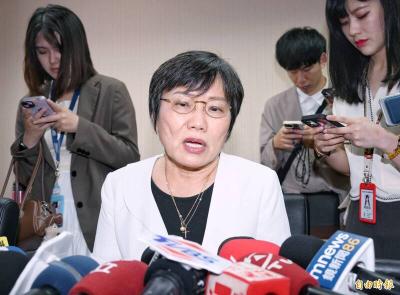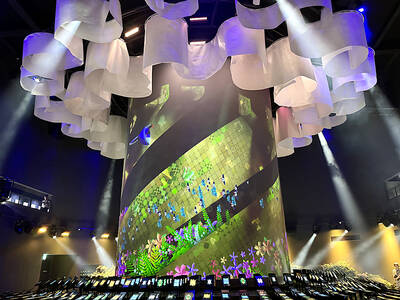A new study on the rising number of retired senior Taiwanese military officers who visit China concludes that retired officials of “mainland” heritage represent the constituency in Taiwan most likely to support unification and could serve as willing conduits for Chinese propaganda intended to manipulate public perceptions in Taiwan.
“Retired Taiwanese military officers have visited China in an individual capacity for many years,” writes John Dotson, a research coordinator on the staff of the congressionally mandated US-China Economic and Security Review Commission in the latest issue of the Jamestown Foundation’s China Brief.
“More organized exchanges between retired Chinese and Taiwanese flag officers — initiated primarily from the Chinese side — have expanded significantly in scale since 2009, he added.
Although the Ministry of National Defense says it does not authorize such visits, it has done nothing to curb the practice, which has raised concerns among US -defense officials over the potential for leaks of sensitive military information or the creation of a back channel for secret negotiations.
A common thread in cross-strait officer exchanges, Dotson writes, is the sponsorship role of the Huangpu Academy Alumni Association, nominally a Chinese civic organization for graduates of the Huangpu (Whampoa) Military Academy.
However, the exchange program is actually a project of the Chinese Communist Party’s (CCP) United Front Work Department (UFWD), he writes.
“[The association] is a thinly disguised front organization operated by the UFWD. It is one of several entities identified by name on a United Front Work Department Web site as organizations managed by the UFWD,” Dotson writes.
The association also shares the same contact telephone number and address with an organization known as the China Council for the Promotion of Peaceful Unification, which describes itself as “a voluntary association of people from all walks of life who support reunification, with an independent legal status.”
“The role of the UFWD in -organizing the exchanges of retired Taiwanese military and intelligence personnel makes it clear that there is more going on than simple reminiscing over friendly games of golf,” he writes. “Chinese officials hope to use the exchanges to achieve a two-track set of goals.”
The first goal, he says, is to “influence opinion in Taiwan’s elite circles of national security policymaking in favor of closer relations — and eventual reunification [sic] — with China,” a facet of the program that has been explicitly acknowledged by CCP officials, he writes.
“The second major goal behind the exchanges is almost certainly an effort to glean information of intelligence value,” Dotson writes, adding that although they are no longer are in active service, retired generals and intelligence officials represent “a highly valuable source of potential information for Chinese intelligence collectors — on areas such as command and control relationships, contingency planning, the status of unit readiness and the personalities of senior officials — whether gained through direct recruitment, or more subtly through targeted elicitation.”
“The exchanges provide an illuminating look at some of the methods by which the CCP conducts intelligence collection and perception management operations directed at Taiwan, as well as its employment of front organizations that masquerade as civil society groups,” he writes.
The department will almost certainly continue to expand its outreach to retired Taiwanese officials, Dotson writes, adding that it will be up to Taiwan’s democratic process “to decide where to draw the line between individual rights of expression and travel in a free society and the national security restrictions required to maintain those same freedoms.”

Chinese Nationalist Party (KMT) Chairman Eric Chu (朱立倫), spokeswoman Yang Chih-yu (楊智伃) and Legislator Hsieh Lung-chieh (謝龍介) would be summoned by police for questioning for leading an illegal assembly on Thursday evening last week, Minister of the Interior Liu Shyh-fang (劉世芳) said today. The three KMT officials led an assembly outside the Taipei City Prosecutors’ Office, a restricted area where public assembly is not allowed, protesting the questioning of several KMT staff and searches of KMT headquarters and offices in a recall petition forgery case. Chu, Yang and Hsieh are all suspected of contravening the Assembly and Parade Act (集會遊行法) by holding

PRAISE: Japanese visitor Takashi Kubota said the Taiwanese temple architecture images showcased in the AI Art Gallery were the most impressive displays he saw Taiwan does not have an official pavilion at the World Expo in Osaka, Japan, because of its diplomatic predicament, but the government-backed Tech World pavilion is drawing interest with its unique recreations of works by Taiwanese artists. The pavilion features an artificial intelligence (AI)-based art gallery showcasing works of famous Taiwanese artists from the Japanese colonial period using innovative technologies. Among its main simulated displays are Eastern gouache paintings by Chen Chin (陳進), Lin Yu-shan (林玉山) and Kuo Hsueh-hu (郭雪湖), who were the three young Taiwanese painters selected for the East Asian Painting exhibition in 1927. Gouache is a water-based

Taiwan would welcome the return of Honduras as a diplomatic ally if its next president decides to make such a move, Minister of Foreign Affairs Lin Chia-lung (林佳龍) said yesterday. “Of course, we would welcome Honduras if they want to restore diplomatic ties with Taiwan after their elections,” Lin said at a meeting of the legislature’s Foreign Affairs and National Defense Committee, when asked to comment on statements made by two of the three Honduran presidential candidates during the presidential campaign in the Central American country. Taiwan is paying close attention to the region as a whole in the wake of a

OFF-TARGET: More than 30,000 participants were expected to take part in the Games next month, but only 6,550 foreign and 19,400 Taiwanese athletes have registered Taipei city councilors yesterday blasted the organizers of next month’s World Masters Games over sudden timetable and venue changes, which they said have caused thousands of participants to back out of the international sporting event, among other organizational issues. They also cited visa delays and political interference by China as reasons many foreign athletes are requesting refunds for the event, to be held from May 17 to 30. Jointly organized by the Taipei and New Taipei City governments, the games have been rocked by numerous controversies since preparations began in 2020. Taipei City Councilor Lin Yen-feng (林延鳳) said yesterday that new measures by